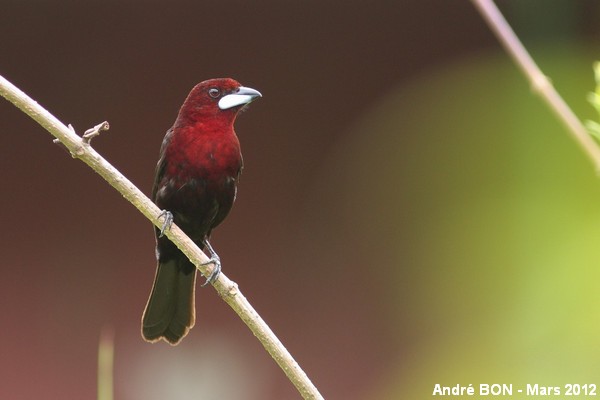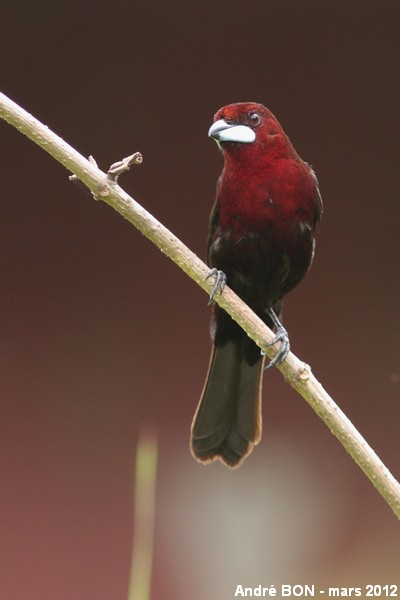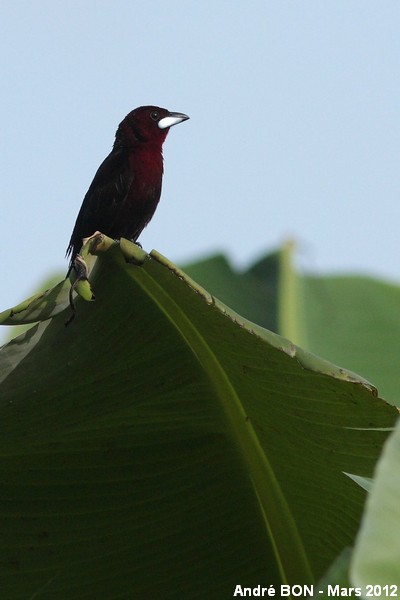


| Silver-beaked Tanager (Ramphocelus carbo (Pallas, 1764)) |



|
|
Scientific name: Ramphocelus carbo (Pallas, 1764) Common name: Silver-beaked Tanager Other names: Maroon Tanager, Common Silverbeak. French name: Tangara à bec d'argent, Tangara jacapa. Order: Passeriformes Family: Thraupidae Size: Size: 18 cm; Weight: 25 g. Habitat: Woodland edges, river banks, savannah, half-open cultivated areas. Food: Fruits, insects and flowers. It can be attracted to the birdfeeder with bananas. Nesting: The nest is built by the female rather close to the ground. It is generally located inside a dense bush at a height lower than two meters. This is a voluminous cup-shaped nest. There are two eggs per brood. Migration: Sedentary. Geographic area: South America east of the Andes. From Colombia, Venezuela and Trinidad in the north, south to Paraguay and central Brazil. |
The male Silver-beaked Tanager has black wings and a black body. The head, the throat and the chest are a deep crimson colour. The silver-coloured lower mandible is the origin of the common name of the species. Females are a paler colour and their lower mandible is a duller colour. Males are used to pointing their bill upwards to show their lower mandible in display and for territory defence. Silver-beaked Tanagers are often seen is small groups of 4 to 8 birds. There are eight subspecies which show variation of contrast between the throat, the chest and the remaining parts of the body. |
| [To know more about the Silver-beaked Tanager] [Next picture] [Top] |

|
I have shot this picture in the village of Saül where I have been able to rather easily observe Silver-beaked Tanagers. The white lower mandible and the bright colours indicate one male. |
| [To know more about the Silver-beaked Tanager] [Next picture] [Previous picture] [Top] |

|
I have got this rather dark and uniform bokeh by positioning so that one house of the village fills the background of the picture. |
| [To know more about the Silver-beaked Tanager] [Previous picture] [Top] |

|
I have only observed males finally. Maybe females are a little more shyer. |